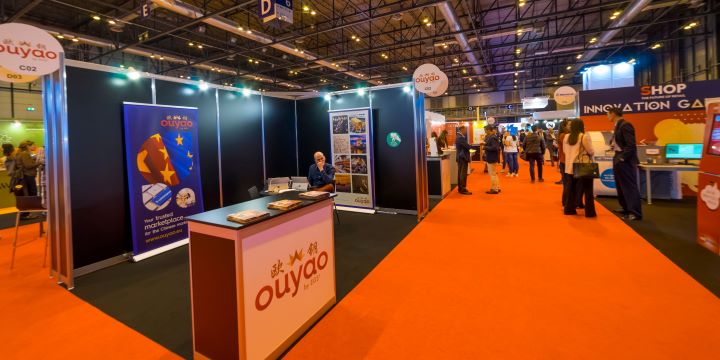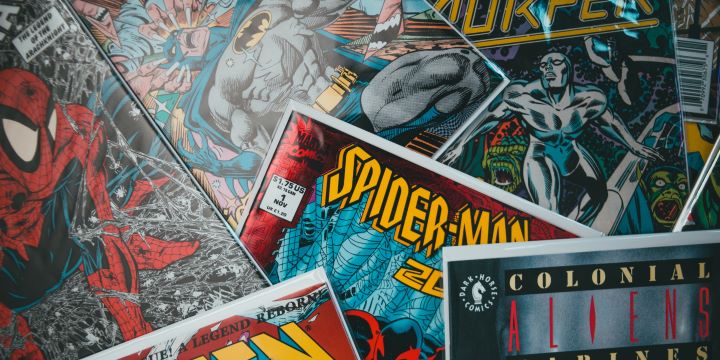Table of Contents
- Understanding the Power of Visual Communication
- The Evolution of Trade Show Graphics
- Elements of Effective Trade Show Graphic Design
- Strategies for Integrating Graphics into Your Trade Show Booth
- Digital Innovations in Trade Show Displays
- Measuring the Impact of Trade Show Graphics
- Making a Memorable Impression: Best Practices
- Sustainable Practices in Trade Show Graphic Production
- Collaborating with Designers to Create Your Graphics
- Preparing for Your Next Trade Show
Key Takeaways:
- Visual appeal in trade show graphics significantly boosts brand recognition and engagement.
- Emerging trends in graphic design showcase interactive and digital innovations as frontrunners.
- A strong trade show graphic design synergizes color, typography, and imagery to convey brand messaging effectively.
- Evaluating the success of trade show graphics involves analyzing various metrics for better ROI measurements.
Understanding the Power of Visual Communication
In a bustling trade show environment, first impressions are critical, and compelling trade show graphics hold the potency to either allure potential clients or slip into the background. The human brain processes visuals 60,000 times faster than text, so visually articulate graphics can communicate a message far more efficiently than words. They are the banner that flags down attention, the signpost that guides prospective customers to your booth, and the initial handshake that introduces your brand before any physical interaction.
These graphics are not merely aesthetic adornments; they breathe life into brand values, mission statements, and unique sales propositions. They tap into the subconscious, allowing for a rapid, emotional response from attendees navigating the maze of exhibits. Some underutilize this swift emotional connection through visual cues, but those who understand this principle integrate it into their trade show strategy, resulting in a more memorable brand presence.
The Evolution of Trade Show Graphics
Trade show graphics have morphed spectacularly from yesteryear’s static banners to today’s dynamic multimedia experiences. Exhibitors who comprehend this evolution tap into a greater potential for audience captivation. The history of these graphics is one of constant innovation, reflecting the changing tastes, technologies, and techniques over time. As we progress into the digital age, this evolution has emphasized the importance of technology that attracts attention and encourages interaction and engagement.
Examining recent trends in trade show technology, an exciting pattern emerges where digital displays and virtual elements have become a transformative force for exhibitors. These trends are far from superficial; they are the culmination of intelligently combining traditional graphic principles with cutting-edge technology to create a storytelling canvas that can adapt, resonate, and immerse visitors in real time.
Elements of Effective Trade Show Graphic Design
To etch a lasting impression in a prospect’s mind, a deliberate concoction of color, typography, and imagery within graphic design is quintessential. Colors serve as psychological cues that influence mood and perception—think of the calmness evoked by blue or the urgency induced by red. Typography can dictate the hierarchy of information and impact legibility and readability, while imagery can bridge cultural and linguistic gaps, allowing for universal communication.
An effective trade show graphic embodies all these elements in a harmonious blend, crafting an instantaneous narrative about the brand. This is a delicate dance between form and function, where aesthetics must captivate while the content informs. It’s a smart visual communication that delivers your message in the blink of an eye and leaves a trace in the viewer’s memory long after the trade show.
Strategies for Integrating Graphics into Your Trade Show Booth
When crafting an exhibit space that speaks volumes, booth design and graphics symbiosis are paramount. To maximize the visual impact, booth graphics should be leveraged to be visible even from a distance, guiding attendees to your space amidst a sea of competitors. Utilizing hanging signage, towering displays, and strategically placed freestanding elements are all tactics that transform graphics from mere images to powerful beacons of attraction.
A layered approach to graphic integration in the space, such as eye-level banners for detailed information, interactive kiosks for engagement, and branded flooring for a fully immersive experience, ensures that no touchpoint is left unused. This strategic layering is akin to visual storytelling with your brand as the protagonist, engaging with visitors at every chapter of their booth journey.
Digital Innovations in Trade Show Displays
The digitization of trade show graphics opens an array of opportunities for exhibitors to make real-time updates, customize messages for different audiences, and integrate interactive components that encourage visitor participation. A digital display is more than just a screen; it’s a portal to a world where your brand can take on many faces, responding to and engaging with the audience in unprecedented ways.
Interactivity is the buzzword in today’s trade show scene. From touchscreens that invite guests to explore your products to augmented reality experiences that transport them to a different realm, these interactive elements turn spectators into active participants in the brand story. They encourage longer stays at the booth, deeper engagement with the content, and a memorable bond with the brand that static graphics can rarely achieve alone.
Measuring the Impact of Trade Show Graphics
Assessment and accountability sit at the heart of savvy marketing investments, and graphic design for trade shows is no exception. The efficacy of trade show graphics can be weighed and evaluated through tangible performance indicators such as attendee interactions, lead conversions, or social media shares. However, delving deeper beyond surface-level metrics reveals rich insights into customer behavior—a high footfall at your booth may mean your graphics have done their job of drawing a crowd. Still, engagement levels will tell a more nuanced story of the connection and interaction between the attendee and the brand.
Marketing teams can expand their insight by delving into studies on the potency of visual communication and learning how to craft graphic materials that strike the right chords with their audience. By marrying the art of design with data science, companies can refine their strategies and achieve a clear-cut view of their return on investment for each graphic element.
Making a Memorable Impression: Best Practices
The quest for creating an unforgettable trade show presence is both an art and a science. It demands an understanding of the interplay between imagination and pragmatism. Best practices suggest that the graphics embody a story that speaks to the audience’s heart while leaving a mark on their psyche. This dual-focus approach ensures your message does not evaporate into the ether once the visitor steps away. It’s about striking that perfectly tuned chord between evocative imagery and conscientious messaging—too loud. It overwhelms, too soft and it fades into the background noise of the trade show floor.
In addition to visual allure, incorporating interactive and educational aspects into your graphics can enhance memorability. Whether through QR codes linking to exclusive content or infographics that distill complex information into digestible visuals, these elements can provide value to attendees seeking to learn more about your offerings.
Sustainable Practices in Trade Show Graphic Production
Sustainability is no longer a niche preference but an ethical imperative that resonates with a broad consumer base. Eco-friendly practices in producing trade show graphics—from using biodegradable materials to opting for LED lighting—can project a forward-thinking brand image that aligns with the environmental consciousness of today’s market. By showcasing a commitment to sustainability, brands contribute to the planet’s welfare and connect with customers on a level deeper than commerce.
Collaborating with Designers to Create Your Graphics
The creation of trade show graphics is seldom a lone endeavor. It involves a close partnership with professional designers whose expertise can transform a company’s vision into a visual spectacle. This collaboration requires a mutual understanding of the brand’s ethos, target audience, and core messaging. The designer’s role is to interpret and translate these into engaging visuals that captivate attention and encapsulate the brand’s identity.
Preparing for Your Next Trade Show
Ahead of a trade show, every detail counts, and finalizing the graphic components is one of the ultimate steps toward a successful exhibit. This involves ensuring that all graphics maintain the highest quality, accurately reflect updated brand messaging, and are free from any wear and tear that could impair their effectiveness. Consideration for the lifespan of these graphics is vital, as proper care, maintenance, and storage will extend their utility, guaranteeing that the investment is not just for a singular event but for a future series of brand exhibitions.




